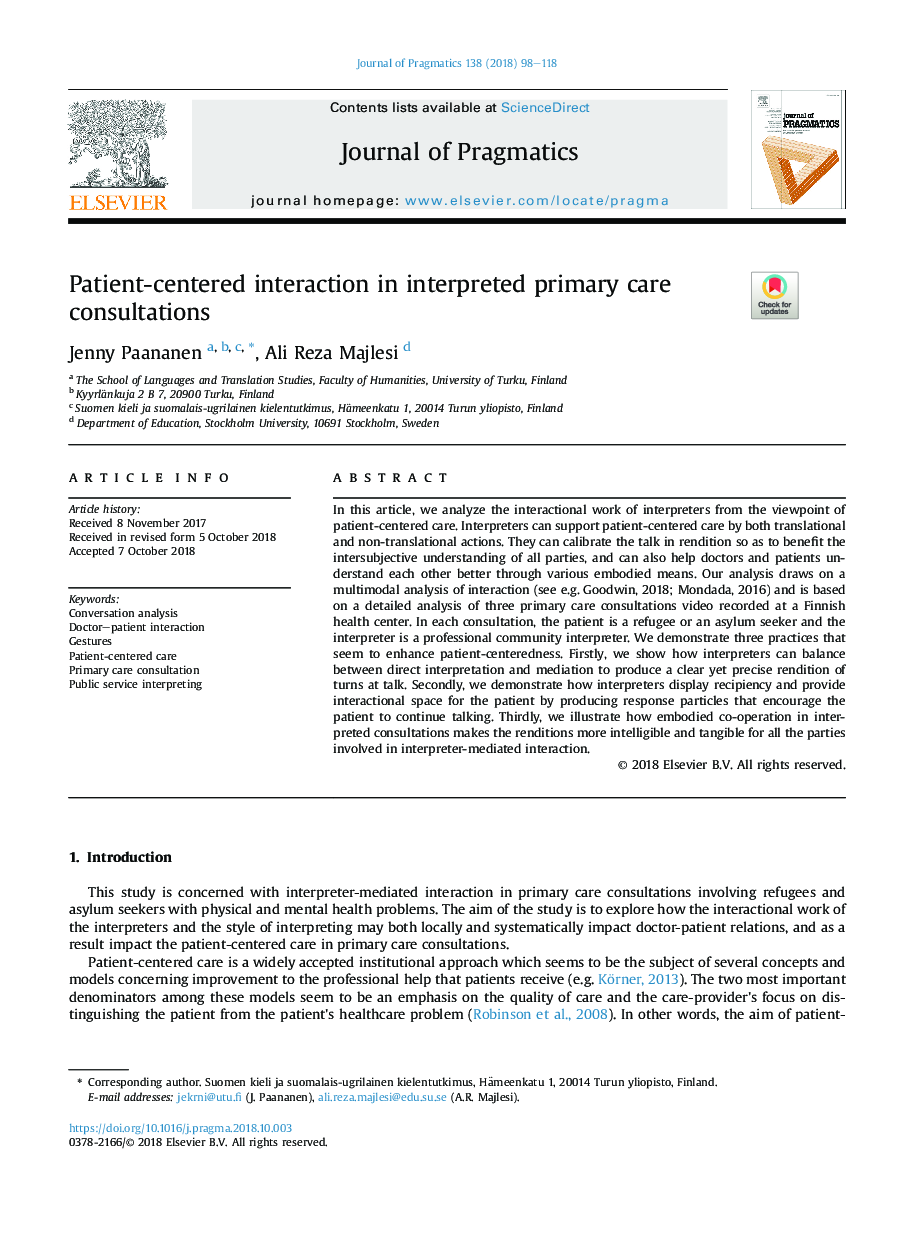| Article ID | Journal | Published Year | Pages | File Type |
|---|---|---|---|---|
| 12155326 | Journal of Pragmatics | 2018 | 21 Pages |
Abstract
In this article, we analyze the interactional work of interpreters from the viewpoint of patient-centered care. Interpreters can support patient-centered care by both translational and non-translational actions. They can calibrate the talk in rendition so as to benefit the intersubjective understanding of all parties, and can also help doctors and patients understand each other better through various embodied means. Our analysis draws on a multimodal analysis of interaction (see e.g. Goodwin, 2018; Mondada, 2016) and is based on a detailed analysis of three primary care consultations video recorded at a Finnish health center. In each consultation, the patient is a refugee or an asylum seeker and the interpreter is a professional community interpreter. We demonstrate three practices that seem to enhance patient-centeredness. Firstly, we show how interpreters can balance between direct interpretation and mediation to produce a clear yet precise rendition of turns at talk. Secondly, we demonstrate how interpreters display recipiency and provide interactional space for the patient by producing response particles that encourage the patient to continue talking. Thirdly, we illustrate how embodied co-operation in interpreted consultations makes the renditions more intelligible and tangible for all the parties involved in interpreter-mediated interaction.
Related Topics
Social Sciences and Humanities
Arts and Humanities
Language and Linguistics
Authors
Jenny Paananen, Ali Reza Majlesi,
